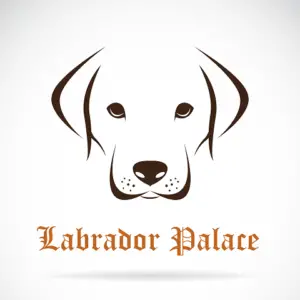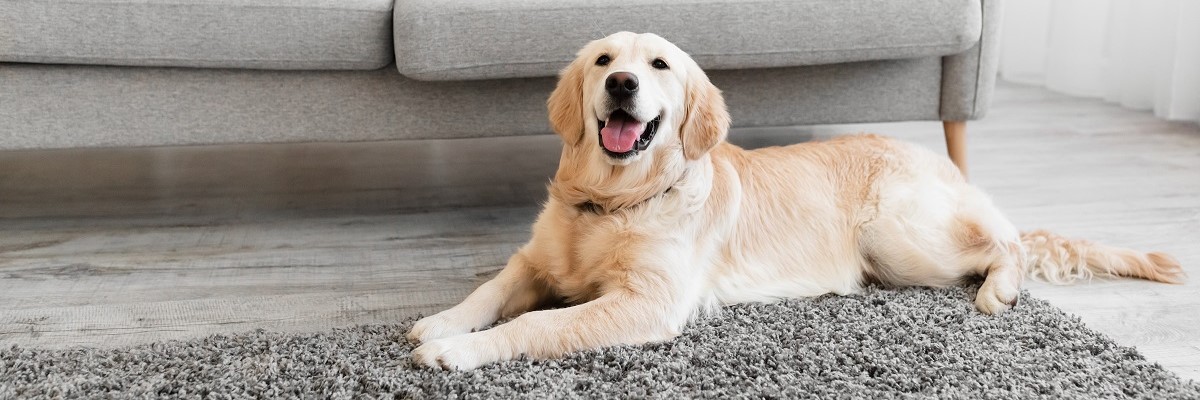Yes, you can. A little training is necessary to be able to leave your Labrador alone. Additionally, they have to feel at ease about it as well as you do. Although you would love to have your Labrador with you all the time, it’s not always possible. There are many situations when you have to leave your Lab alone, such as when you leave for work, a social event, or even to eat out.
How do you make your Labrador feel safe and happy when you aren’t around? Is there a limit to the amount of time you can leave your Lab home alone? Are there any precautions you should take? These are just a few of the questions we hope you can answer from reading this article.
How Long Is Too Long When Leaving Your Labrador At Home Alone?
Do not leave your dog alone at home for an extended period if possible. In spite of the normal routine, leaving a dog alone for an extended period of time can cause distress. Depending on their age, you can leave your dog at home alone for the following periods of time:
| Labradors Age | Time Alone | Explanation |
| Labrador Puppies | Two hours is the limit a day. | Having to stay home alone is unfamiliar to them. Peeing more and getting separation anxiety are common symptoms. |
| Adult Labradors | Is capable of being left alone, approximately 4 to 6 hours each day. | They are accustomed to being left at home alone. If you’re not at home, they will sleep. |
| Senior Dog | You can leave them alone between 2 and 6 hours. | Depending on the situation. Is your elderly Labrador suffering from health problems? Is it necessary for them to urinate more often, for example? |
Determine the Location To Leave Your Labrador At Home.
Decide The Location For Your Labrador.
| Inside being crated/Inside roaming free | Outside |
Factors To Take Into Consideration
| The size of their bladder and their control | Duration of your absence |
| Destructive practices, whether or not there are any | There is a yard available |
| Situations weather-wise |
Crates can provide a Labrador with both security and comfort. If you leave your Lab alone at home, they need a comfortable bed and access to water. They may need bladder training in order to stay comfortable. Because labradors tend to nap most of the time when you’re not around, it makes it a better choice for less active pets. If you are going to be away from your Labrador for an extended period, make sure you get back to them when you return. By using crates, you are also protecting your home from doggie damage.
By keeping them indoors and in one room, you protect your Labrador against the elements and potential predators and reduce their chances of escaping. In the meantime, it will be necessary to get a good litter box for your Labrador in order to avoid accidents throughout the house. Laboratories that are not destructive are best suited for this environment.
Leaving dogs in the backyard to roam free, go to the restroom without fear, and breathe fresh air is the best thing you can do for them. In addition to the possibility of escaping, the downside is bad weather, fleas, ticks, and predators. It is important that they have shelter, water, and a secure yard. Depending on what you think is best for your Labrador, you can decide where to place them.
Teaching Alone Time
Begin by placing your Labrador in a confined area with a chew toy or another activity, and then quietly leave the room. Upon your return, compliment and reward them. Slowly increase the length of your absence each time. In the beginning, even one or two minutes may seem too long, but over three or four days, you can gradually increase the length.
As time goes on, make sure that your Labrador is ok. When they are quiet and calm before you leave, reward them with treats. Make sure you keep an eye on them without being obtrusive. Your Lab shouldn’t miss you when you leave the room.
During confinement, your Labrador may cry either because you started puppy training before they knew how to associate good things with their environment or because you left them alone too long. Never let them out while they’re whining. As a result, they will learn that whining gets your attention. Increasing the length of time spent in confinement slowly as they are able to handle it.
It can be disastrous when your Labrador is left to its own devices without anything to do. As a result, whenever they are in their containment area, provide them with constructive activities. They will learn how to be happy by themselves this way.
Chewing on a chew toy filled with food helps keep young Labs distracted and interested. Toys like Kongs are fine since they reinforce chewing behavior as they contain food. You won’t have long to wait until your Labrador is chewing on toys and not the side of the door.
TVs and radios can also be used to provide companionship for Labradors left alone. You can use this to mask distressing noises like honking cars or garbage trucks. Allow your dog to spend more time alone each day. You could be in another room, outside when they’re at home, or vice versa, or more likely go somewhere else altogether. By taking note of their toilet habits, you can determine how long you can leave them alone before they need to go.

Limit the Number of Issues Areas They Can Access
Since your dog may start going from room to room looking for you if you accidentally allow it to run through the house, you may not realize how upset he will be. Small spaces are often more comfortable for dogs. Keeping your dog safe when you are away can be achieved by using crates and single rooms. Place the crate in a familiar, warm area where the dog won’t be exposed to the sun. Your Labrador must be used to the crate before it can be used. If they get a little out of control, you should remove all items you don’t want to be broken or chewed on.
Protect Your Most Your Lab Family Member
When you’re not at home, you need to ensure your Labrador stays safe. If you have a Labrador in the house, make sure your home is dog-proofed by removing any dangerous items from reach. Backup plans should be in place in case of an emergency or if you cannot reach home immediately. In the event that you are late, you might need to set up dog pads or ask someone to drop in.
Doggie Daycare
If you do not want your Labrador to spend long hours alone at home while you work all day, then perhaps a doggie daycare may be an option. Besides providing a safe and stimulating environment, it offers several other benefits to make your life easier.
Relieve separation anxiety
Leaving your pet for hours at a time can cause them to become bored or suffer from separation anxiety. As a result, you may find chewed-up shoes and pillows when you return home from work. Boredom can be eradicated by dog daycare, while separation anxiety can be relieved. When there are plenty of humans and doggie buddies to keep your fur baby entertained, you’ll never have to worry about your expensive heels getting shredded.
Socialization
His socialization greatly influences a dog’s behavior from puppyhood through adulthood. Their behavior becomes calmer when they meet new people and pets, thus reducing stress, aggression, and skittishness.
Your Labrador is safe
The truth is, sometimes our naughty pups like to escape their crates or jump over the fence. What can you do to ensure your dog’s safety while you are at work? Furthermore, the individuals watching and playing with the dogs are trained professionals, giving you peace of mind that your Labrador is in good hands.

